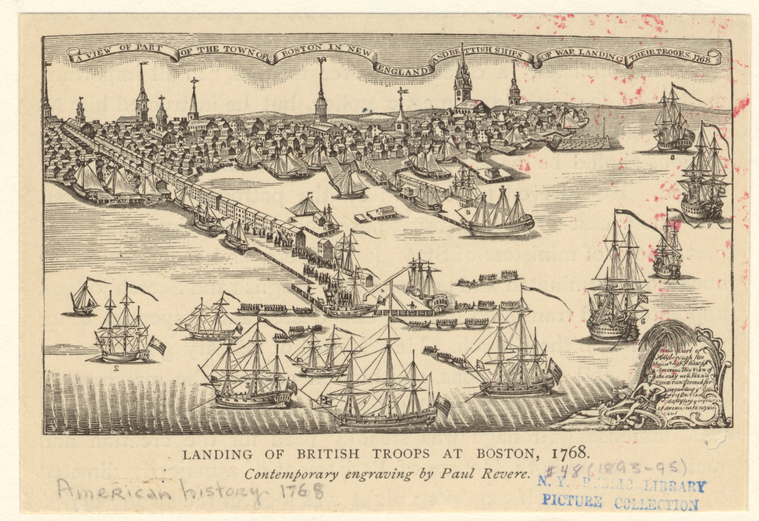 |
| "Landing of British Troops in Boston, 1768" From: New York Public Library Picture Collection Online |
Bostonians responded to oppressive British economic policies of the early 1770s such as the Tea Act (1773) with remarkable interclass unity, especially in comparison to New York and Philadelphia. "The Body of the People" mentioned above encompassed wealthy merchants such as John Hancock, radical, religious leaders such as Samuel Adams, and common laborers and artisans. It acted in unity to oppose British policies--and enforced unity when needed. Nash argues that two reasons for this unity were the British army's occupation of the city from 1768 and the ability of Samuel Adams to transform resistance into a kind of religious crusade that hearkened back to Puritan ideals of community and moral economy. The unity of Bostonians in opposition to British policy meant that if you were a merchant attempting to make some extra cash by smuggling in British tea, you might wake up one day to find "Hillsborough paint" on your door! Not a pleasant experience, I'm sure.
No comments:
Post a Comment